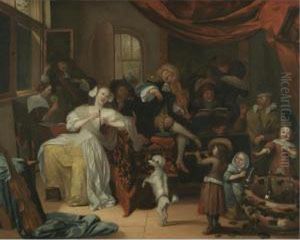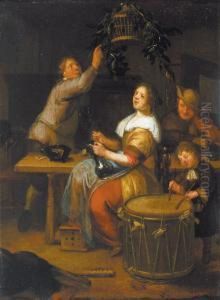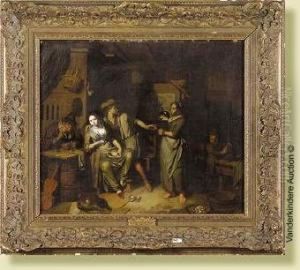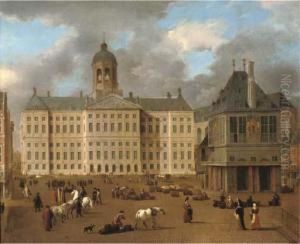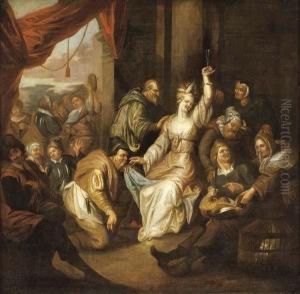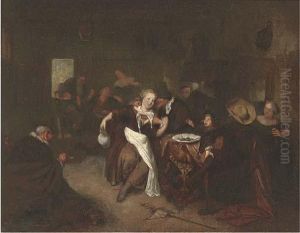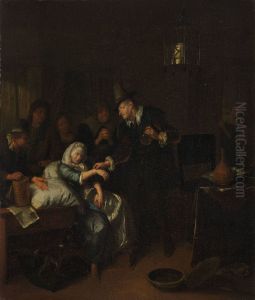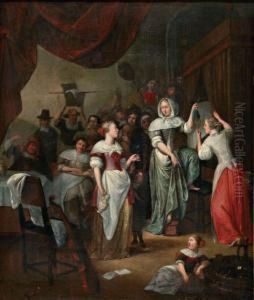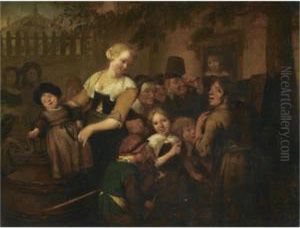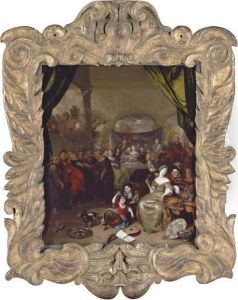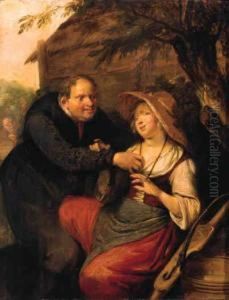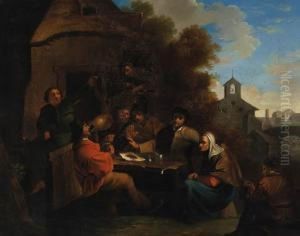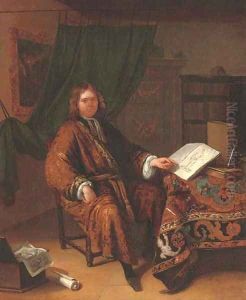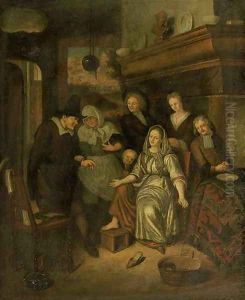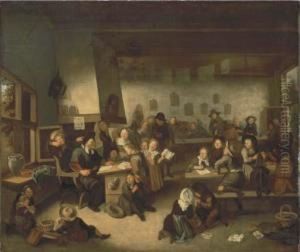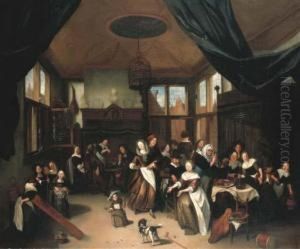Richard Brakenburgh Paintings
Richard Brakenburgh was a Dutch Golden Age painter who was born in Haarlem, the Netherlands, in 1650. He specialized in genre scenes, often with a humorous or moralizing undertone, which depicted lively gatherings and festive occasions among the middle and upper classes of Dutch society. Brakenburgh took inspiration from the works of contemporary Dutch artists, such as Adriaen van Ostade and Jan Steen, and he was known for his detailed interiors and skillful portrayal of light.
Brakenburgh began his artistic training in Haarlem, where he was influenced by the Haarlem school of painting, which was known for its focus on everyday life and the use of bright colors. He later traveled to Alkmaar and possibly to Friesland, which may have contributed to the development of his own unique style. His works were appreciated for their narrative content, with each painting often telling a story or capturing a moment of joy or celebration.
Throughout his career, Brakenburgh remained relatively active, producing a considerable number of paintings. He became a member of the Haarlem Guild of St. Luke in 1673, which was an important milestone for artists of the period as it allowed them to sell their works and take on students. Despite his membership in the guild and his prolific output, there is not as much known about Brakenburgh's life compared to some of his contemporaries.
Richard Brakenburgh's work provides a window into the social life of the Dutch during a time of great wealth and cultural achievement, known as the Dutch Golden Age. His paintings are characterized by their vibrancy, attention to detail, and the animated expressions of the figures within them. Brakenburgh continued to paint up until his death in Haarlem in 1702. His works can be found in various art collections and museums around the world, where they continue to be studied and appreciated for their contribution to Dutch genre painting.


